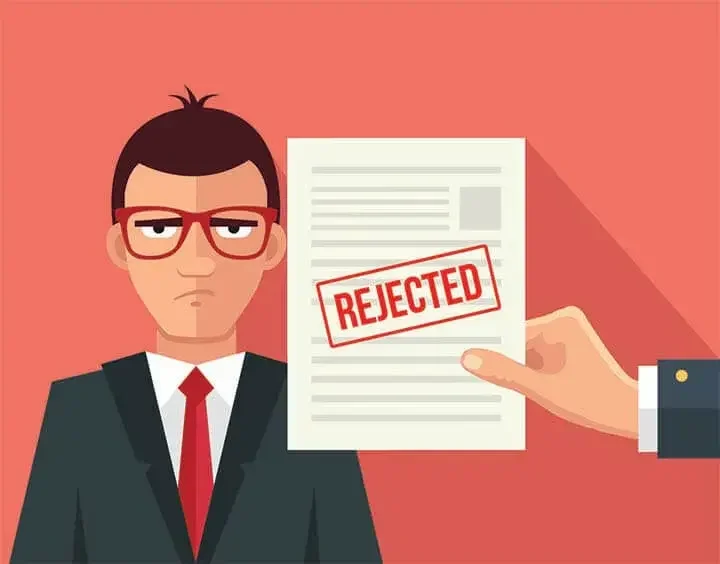If you've filed a trademark application, you're probably excited to get started using your mark. But not so fast—according to the United States Patent and Trademark Office (USPTO), many applications are rejected.

To avoid having your trademark application rejected, it's worth spending some time studying why applications are denied so you won't make the same mistakes.
"Many trademark application mistakes are avoidable if the application is properly prepared," says J.R. Skrabanek, Senior Counsel with Jones Law Firm in New York, NY, so working with a professional can ensure you get it through on your first try.
Types of mistakes
There are two types of rejections you may have to deal with from the USPTO. A "procedural rejection," happens when you did something technically wrong on the application—skipped a question or answered it incorrectly. A "substantive rejection" happens when there is a problem with the mark itself. The USPTO will notify you if there is a problem with your application.
Both types of mistakes can be corrected by filing a response or with the help of a trademark lawyer.
Starting in 2023 you have three months to file your response or submit the additional materials requested. You must address all of the reasons for rejection in your amended materials at once. You should always check with the examining USPTO attorney if you have any questions.
These are some of the most common mistakes on a trademark application:
Applicant name
Be sure that you list the name of the person or company that owns the mark. It's easy to get confused if you are a sole proprietor, but you need to be certain whether you or the company is the owner.
Likelihood of confusion
The USPTO can reject an application if the mark is likely to be confused with another previously registered mark. For example, if there is an existing trademark for Nutto and you are trying to register a mark for Knutto, it is too similar. Skrabanek says, "the most common mistake applicants make is not searching the USPTO database thoroughly enough. Registrants should search for variations on their proposed mark (such as alternative spellings and plurals) to truly confirm it is not already registered."
Too generic
If your mark includes a word that is generic, you may be asked to add a disclaimer to your application stating that you are not trying to trademark the generic word. For example, if the mark you have applied for is JLK Gloves, the mark could be rejected because the word "gloves" is too generic. You may be asked to file a disclaimer that your mark won't include the word "gloves." ,
Unclear specimen
You must submit product examples with your application, and they must be representative of the mark in use.
Joe Palumbo, president of Ice Dam Guys, LLC, filed an application to trademark his Steamzilla machine and had it rejected. "Bottom line—the photos of our steamers with STEAMZILLA decals taken in our shop and steamers in the back of trucks were not enough. They wanted photos of our steamers on a job site 'in use.'
So, we simply went out there and took more photos of our machine being used in a variety of sites, states, and customers and sent those in. I also shared the links to news coverage we secured on a variety of TV stations in several states where the Steamzilla was in the background of the newscast. Between all of that, we were golden, and it showed the machine in commerce."
Wrong trademark class
USPTO applications must be precise in every way, and that includes the class you choose. Each item must fall into a class, and there are many detailed classes. It's important you choose the correct class for the exact product your mark will apply to, so read them carefully and get legal help if you don't understand the nuances between the categories.
You can't cover your bases by checking all the boxes, either. The USPTO requires you to have an actual product that carries the mark to be entitled to receive the trademark, so you can only choose categories where you have a product.
Carefully creating your trademark application will help you avoid common mistakes. But if your application is rejected, it's not the end of the world. You may be able to provide additional information or make the changes requested and get it approved.

